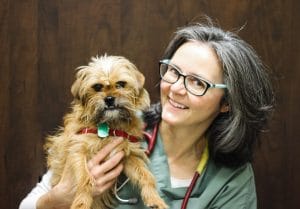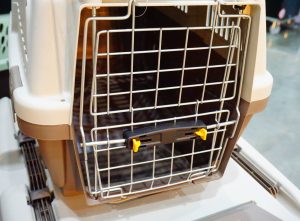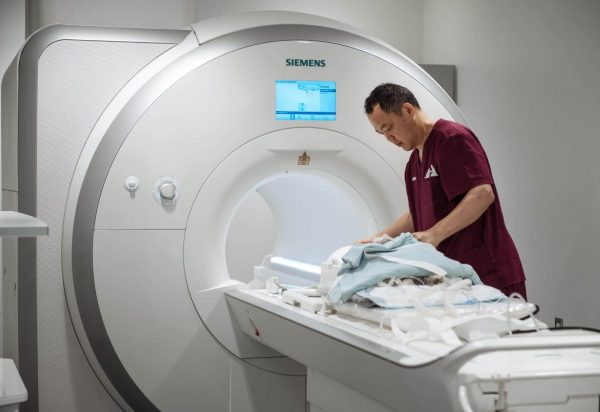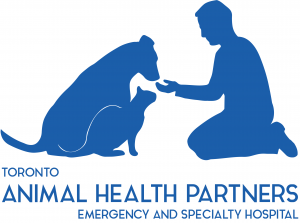REDUCING STRESS AT THE VETS

Written by Dr. Dawn Crandell,
DVM DVSc, DAVCECC, CTC

Do you put off taking your pet to the vet because you dread how stressful it will be? You aren’t alone. A study done in 2011 revealed that an astounding 58% of cat owners and 38% of dog owners report their pet detests going to the vet. It’s 2020 now but I doubt things have changed much. Pets quickly learn that vet offices are places where scary things happen (restraint, injections, barking dogs, high tables with unsteady footing, separation from their trusted person etc.) As a vet, it distresses me to know that most of my patients cower in terror at my approach and tremble with fear at the sight, sounds and smell of a vet clinic. Owners are embarrassed their dog or cat growls, bites, hides or refuses to greet me, but I know these pets are scared out of their wits and their unfriendly behaviour is perfectly reasonable; they desperately want to get away or make me go away. I worry too, that a lot of pets don’t come in to see us until the 11th hour of an illness because their owners don’t want to face the distress of a vet visit.


Creating a stress-free experience starts with veterinarians and owners making sure puppies and kittens have great experiences in those first several vaccine visits and veterinary staff being careful to avoid causing fear or pain in subsequent visits. If that path was not taken and your pet is a basket-case in the vet office, here are two ways to make it better. Reducing fear is a welfare issue; avoiding a frightening experience is worth all your effort.
Make The Cat Carrier a Source of Comfort

If you have a cat, likely the mere sight of the carrier will cause your cat to cram himself into the smallest, darkest, dustiest corner of your house because the carrier is a tip-off a trip to the vet is in the cards. You can make the carrier a source of comfort rather than a terrifying omen by leaving it out in your living space all the time. Put a comfy blanket in there, toss in some cat nip if your cat likes that, throw treats into it 3-4 times per day. At first, take the top off it if you can, and let it be a comfy bed. It will take a while, but eventually it will become as innocuous as a piece of furniture, and if you keep putting treats on and around it, your cat will come to like it. Once he is showing no fear of it and settling into the bed, put the top back on, keep tossing treats in a few times a day, and let your cat use it as a handy bed or cozy den. If you have left it out for a couple of months and your cat is still afraid of it, try a different type or style of carrier that doesn’t come preloaded with associations with the vet hospital. Use the power of Pavlovian conditioning to get him to LOVE that carrier – put toys, treats, catnip and other goodies in the carrier frequently. Once he loves it, putting him in the carrier to take him to the vet is a much less stressful experience.
Make the Vet Clinic a Place Where Great Things Happen
If you live near enough to the vet clinic to walk by it with your dog, make it part of your regular circuit. If you usually drive to your vet hospital, take lots of intentional side-trips there and walk around the parking lot or near the front door with your dog. Once there, use your happy silly voice and give your dogs some really great treats (don’t be cheap here; bring out the real bacon, leftover roast chicken, or something equally amazing your dog would never otherwise get.) If you do this every time, she will develop a bit of happy anticipation to be near the vet office doors. If your dog is too upset to take treats near the vet office doors, walk or drive farther away. Try across the street or 2 doors down. Once she is happy taking treats there, try a little closer on your next visit until you can get to and into the front door with no problem.


These are just two of many strategies you can use to reduce stress at the vet hospital. Ask your vet team to join you in your efforts to make the visit more fun and less scary for your pet. Many vets are thinking a lot more about the deleterious effects of fear and stress on their patients these days and would be happy to have you onside in the effort. Just like in people, health encompasses minds as well as bodies, and we need to look after both.
About The Company
Animal Health Partners Toronto is a new veterinary emergency and specialty hospital modeled after best practices in human medicine. Lead by a team of highly qualified veterinary specialists, Animal Health Partners Toronto Emergency and Specialty Hospital is bringing the world’s best practices of private human healthcare to veterinarian care.

The technical proficiency and medical equipment at Animal Health Partners equals or exceeds that found in sophisticated human hospitals.
Animal Health Partners provides the highest-quality Veterinarian Services in Toronto. Our specialists combine their collective knowledge and skill in the treatment of complex or multifaceted cases. We serve as an extension of your family veterinarian and provide exceptional specialty care by treating our patients as if they were our own pets.
Our Core Values
Quality
At the root of all we do at Animal Health Partners is a commitment to the highest quality of veterinary care. This means that the diagnostic tests we run and the treatments we provide are informed by the best available scientific evidence and implemented by the most highly qualified veterinarians and staff.
Compassion
We understand that the experience of illness and injury can be painful and scary for pets and their owners. We strive to reduce discomfort as much as possible using gentle handling techniques, appropriate pain-management, stress-reducing design features, non-invasive interventions and a continuous emphasis on empathic patient-centered care.
Service
Intrinsic to our goal of providing the highest quality of medicine is providing efficient, courteous, attentive and responsive service to the owners and referring veterinarians that have entrusted us with the care of their pets and patients.
Innovation
Medicine is rapidly evolving. Our technologically advanced institution is equipped to employ and pioneer the most cutting-edge diagnostic and treatment modalities available in veterinary medicine with the goal of improving the quality of care for all patients.
Partnership
High-quality care and optimal patient outcomes rely not on any one individual but on the strength of the connections between many. Ensuring the best possible outcomes for our patients means creating solid partnerships with their owners and referring veterinarians. It also means establishing relationships more broadly with the community, the human medical field and with industry.
